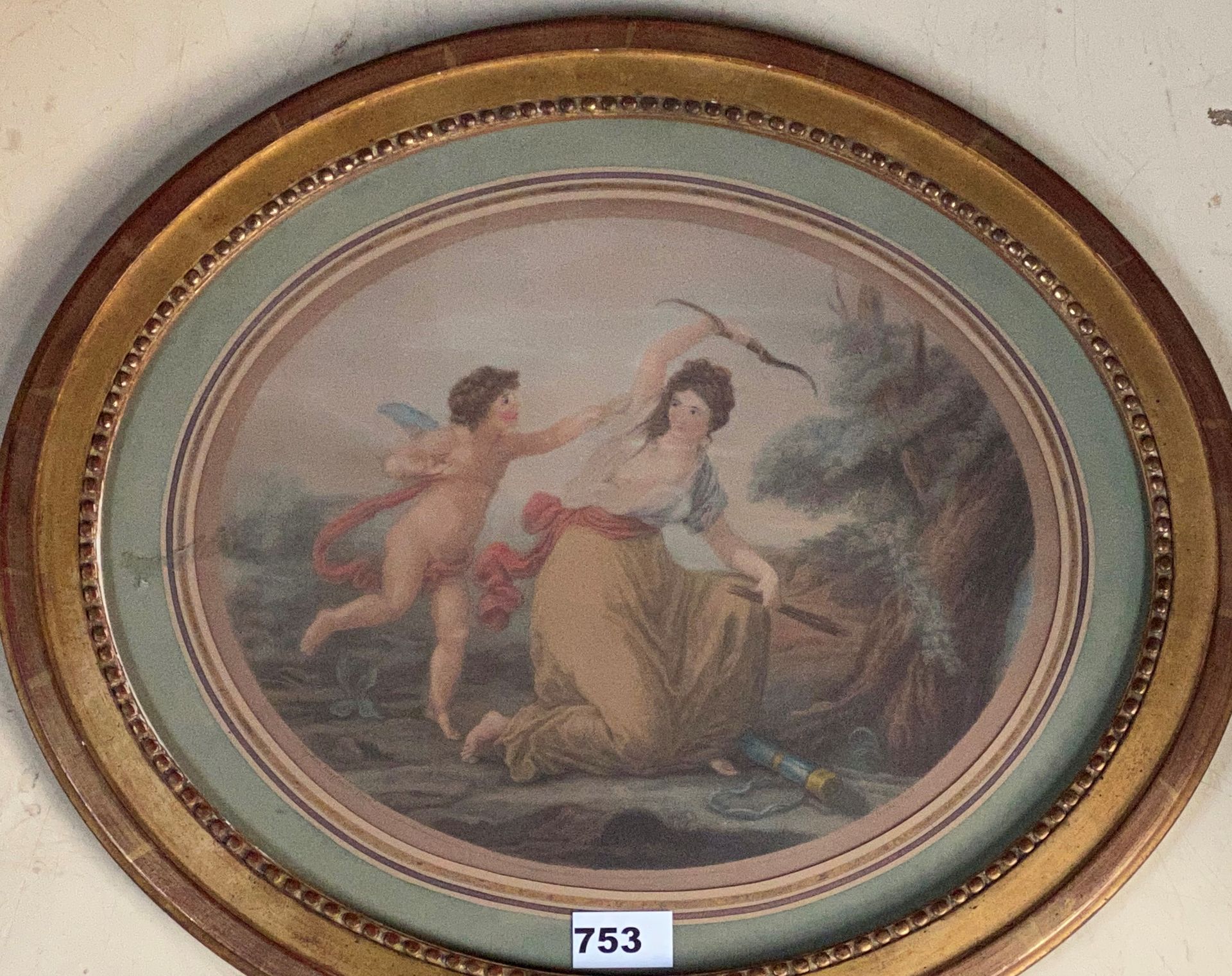Description
Thomas Burke (1749-1815) after Agelica Kauffman (1741-1807) "Cupid Disarmed by Euphrosine", 1784, Dotted engraving with roulette heightened with watercolour on wove paper. Sight 27,5 cm x 34 cm. Framed in the taste of Mariette in an elegant oval frame. Chipping at the edge of the frame, paper insolate. Note: Engraving interpreting with gentleness the work of Angelica Kauffman, 18th century painter who studied Art in Italy from 1754 to 1760, then in Florence in 1762, in Rome in 1763 and in Zurich in 1764. Thomas Burke made an engraved portrait of the artist in 1787. Expert : Mrs Edwige BARRETEAU
753
Thomas Burke (1749-1815) after Agelica Kauffman (1741-1807) "Cupid Disarmed by Euphrosine", 1784, Dotted engraving with roulette heightened with watercolour on wove paper. Sight 27,5 cm x 34 cm. Framed in the taste of Mariette in an elegant oval frame. Chipping at the edge of the frame, paper insolate. Note: Engraving interpreting with gentleness the work of Angelica Kauffman, 18th century painter who studied Art in Italy from 1754 to 1760, then in Florence in 1762, in Rome in 1763 and in Zurich in 1764. Thomas Burke made an engraved portrait of the artist in 1787. Expert : Mrs Edwige BARRETEAU
You may also like
